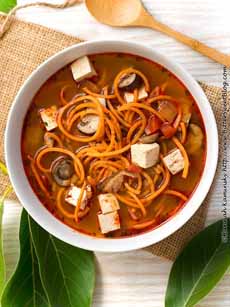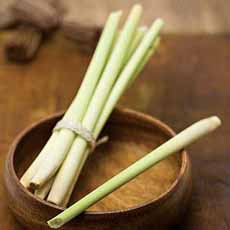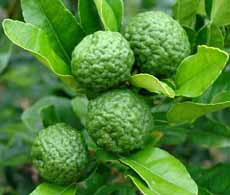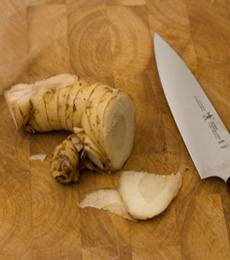RECIPE: Tom Yum Soup From Thailand
 [1] Tom yum, a spicy Thai soup, is good in both hot and cold weather (photo courtesy Hannah Kaminsky | Bittersweet Blog).
|
Hot enough for you?
In our high-temperature, high-humidity corner of the world, even the heat-exhausted professional baseball players are being replaced every inning. That’s why when we received this recipe from our colleague Hannah Kaminsky of Bittersweet Blog, we thought twice: It’s hot and spicy. Then we remembered: Hot and spicy foods are good in hot climates. The spices engender more sweating, which helps to cool you off (although you may not look so attractive in the process). Medically speaking, the benefits of eating hot and spicy foods include heart health and longevity. The details are in the second half of this article. Hannah says, “If you can’t stand the heat of the dish, feel free to take down the spice level a notch by incorporating a splash of creamy, cooling coconut milk [Editor’s note: if you don’t mind dairy, a splash of cream or half and half will do]. In her version of her tom yum soup (photo #1), Hannah replaced the conventional rice noodles with sweet potato noodles from her spiralizer. The result: tom yam soup. 🙂 She observes: “The sweet, sour, and spicy combination gains greater depth from the yams [rice noodles have more texture than flavor], and preparation is coincidentally simplified. Everything goes into one pot, cooks just to a boil, and dinner is served.” Tom yum soup typically includes shrimp, but Hannah doesn’t eat them. So we’ve included them as an option: Cook them in the soup, or place already-cooked shrimp in the bowls and pour the soup on top. Ingredients For 2 Servings It’s thus an offensive term in some parts of the world. The movement @KaffirNoMore suggests using makrut, the Thai word for the bumpy lime; or simply, lime leaves, instead. The problem is, though, that the distributors and retailers sell “kaffir.” Check out the different types of limes. 1. SPIRALIZE the yam and and placing the yam noodles in a large stock pot. Add 3 cups of the stock to generously cover the vegetable noodles, along with shallot. |
|
|
2. BUNDLE the lemongrass, lime leaves, and galangal or ginger in a large tea ball/spice ball and add to the pot. This allows for a powerful flavor infusion with easy removal later, since these ingredients are too fibrous to consume. If you don’t have a large enough tea ball, use cheesecloth tied with kitchen string. 3. ADD the tofu, mushrooms, sambal oelek, soy sauce and lime juice. Bring to a boil over medium heat; then simmer for about 10 minutes, until the yam noodles are fork-tender but well before they start falling apart. 4. DIVIDE the soup between two big bowls. Garnish with cilantro and dig in while it’s hot—just like today’s weather. ________________ *If you don’t have access to an Asian market, where kaffir is sold fresh or frozen, substitute the zest of 1 lime for every 2 kaffir lime leaves. †Sriracha vs. sambal oelek: The main flavor differences are that sriracha has a hint of garlic in sriracha and less vinegar tang. It is a sauce, rather than a paste like sambal oelek. In this recipe, the texture of the ingredient makes no difference. |
||





